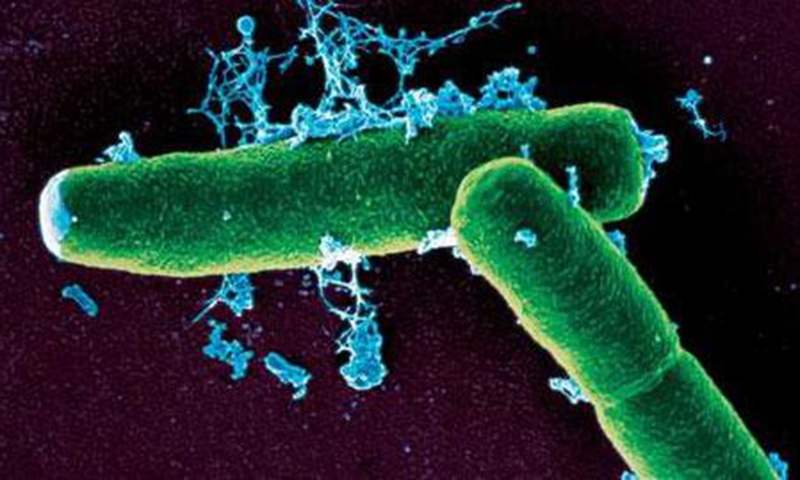
Bacillus anthracis, the pathogen that causes anthrax Photo: website of Chinese Center for Disease Control and Prevention
Wenshui county in North China's Shanxi Province reportedly found nine suspected cases of anthrax, who were involved in cattle breeding, slaughtering and selling. Two of the nine cases have been discharged from hospital, while the rest are quarantined and being treated.
Local health authorities reported on Thursday that a number of villagers from Wenshui had experienced papules on limbs, which then turned into blisters and ulcerations. They also developed symptoms of edema and swollen lymph nodes, national broadcaster China Central Television (CCTV) reported on Sunday.
A total of nine people developed such symptoms, among whom two have been discharged from hospital, two are getting medical treatment in Taiyuan, and another five are still in the village, according to local media reports.
The five patients in the village have been put under isolated treatment. All venues they had visited as well as their excrement are being disinfected, and health authorities are closely monitoring their close contacts.
Epidemiological studies will continue to confirm the diagnosis, and investigations will be launched on local livestock and environment.
The provincial health commission of Shanxi has dispatched medical experts to assist probes to control and prevent the disease from spreading.
The nine cases were all involved in works of cattle breeding, slaughtering and selling, CCTV reported. In June, one anthrax case was reported in Wenshui county, which the local authorities have been closely following.
Beijing reported an anthrax pneumonia patient on April 9, who came from Chengde in North China's Hebei Province and had contact history with cattle and sheep. The patient was quarantined and put under isolated treatment, the Beijing Center for Disease Control and Prevention said.
Anthrax is highly deadly if not treated timely. It is prevalent among cattle and sheep, which can infect human beings after they come in contact with sick animals or contaminated products. The most common way of infection, 95 percent of reported cases, is skin contacts, which could cause blisters and skin necrosis.
Anthrax can be transmitted among human beings but it's not as infectious as the flu or COVID-19.
Global Times




